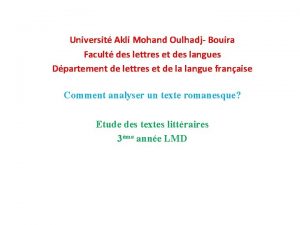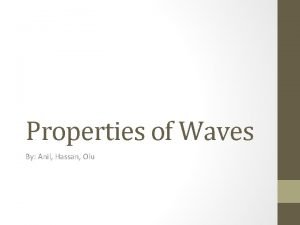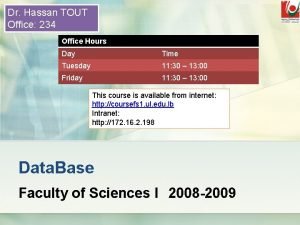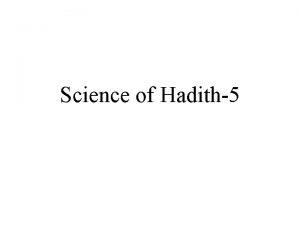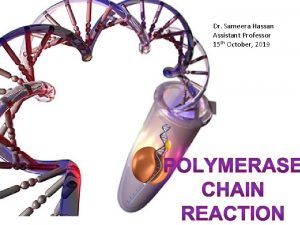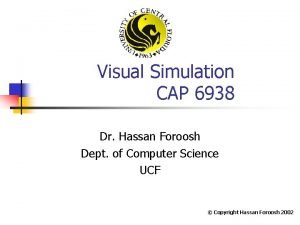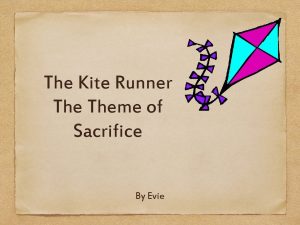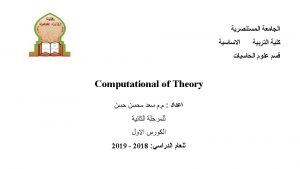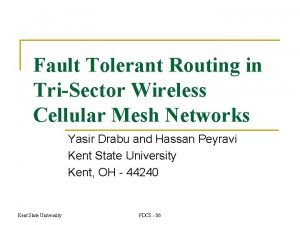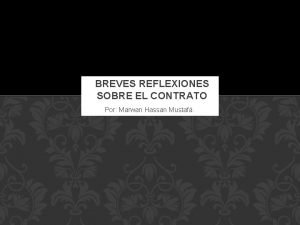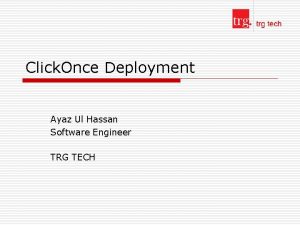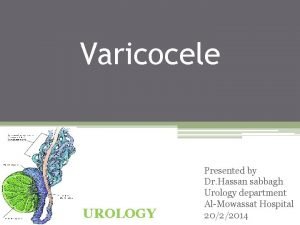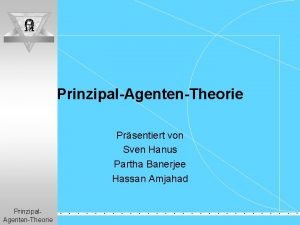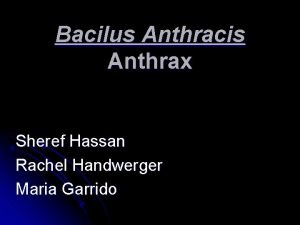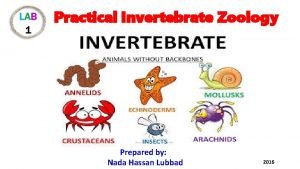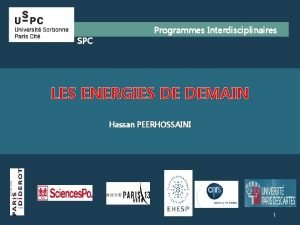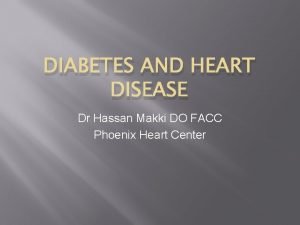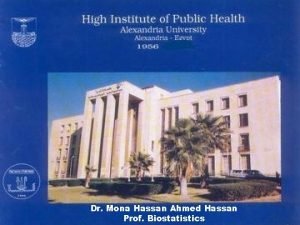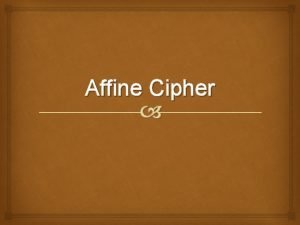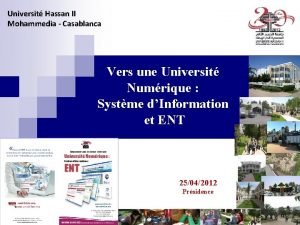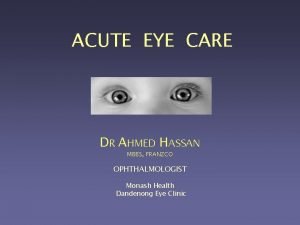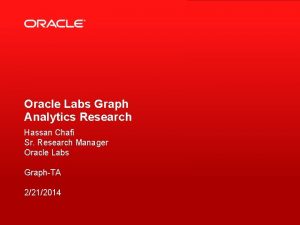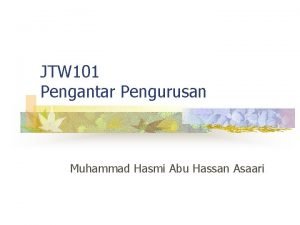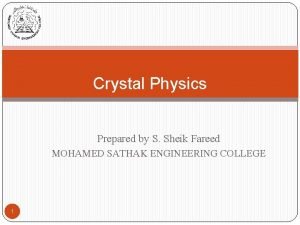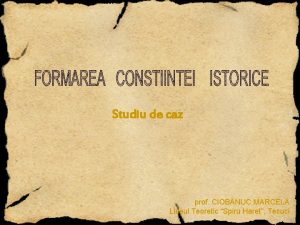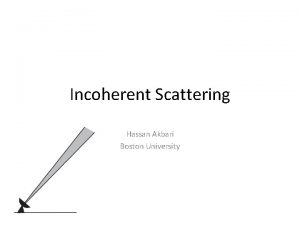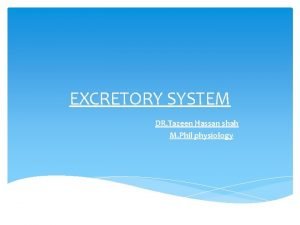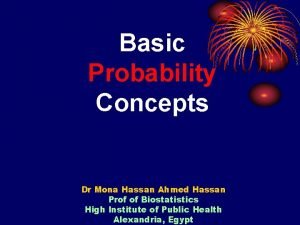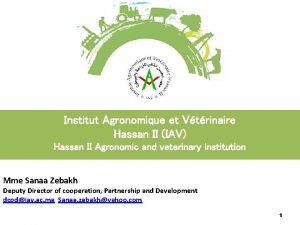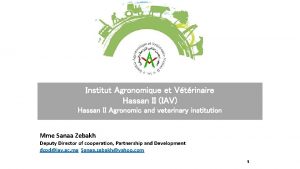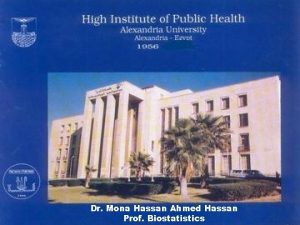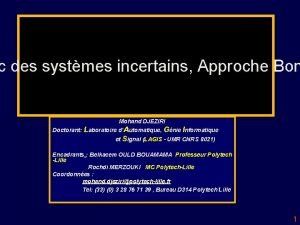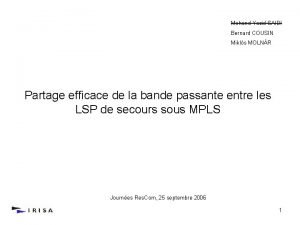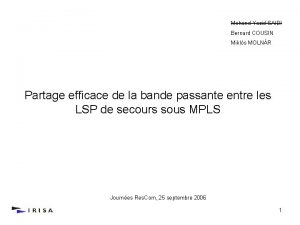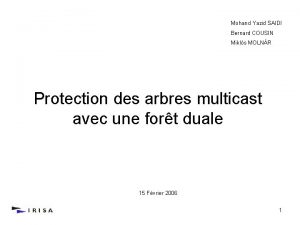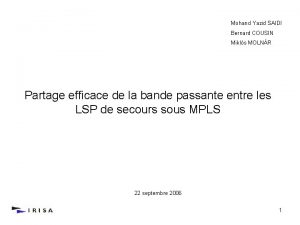Dr Mohand Hassan Moalla 1 Dr Mohand Hassan
















![The steps in thyroid hormone biosynthesis n n n n Thyroglobulin (TG) [colloid] Formation The steps in thyroid hormone biosynthesis n n n n Thyroglobulin (TG) [colloid] Formation](https://slidetodoc.com/presentation_image_h2/e6510eb4a12aff32868c7c6fb8a9cc51/image-17.jpg)




























- Slides: 45

Dr. Mohand Hassan Moalla 1

Dr. Mohand Hassan Moalla 2

pyramidal lobe larynx left Lobe isthmus Right Lobe Dr. Mohand Hassan Moalla 3

Anatomical Considerations n The thyroid gland, located in the anterior portion of the neck, secretes the hormones 1. Thyroxine (T 4) thyroid hormones 2. Triiodothyronine (T 3) 3. Calcitonin. Dr. Mohand Hassan Moalla 4

Anatomical Considerations n The thyroid is a butterfly-shaped gland that straddles the trachea in the front of the neck n It possesses a right and a left lobe connected by an isthmus n there is sometimes a pyramidal lobe arising from the isthmus in front of the larynx n The gland is well vascularized Dr. Mohand Hassan Moalla 5

thyroid follicles (thyroid hormone) parafollicular cell calcitonin Dr. Mohand Hassan Moalla 6

thyroid follicle follicular epithelial cells colloid Thyroid hormone (T 3 , T 4) Basal membrane Dr. Mohand Hassan Moalla 7

thyroid follicle The portion of the thyroid concerned with the production of thyroid hormone n Each spherical follicle is surrounded by a single layer of (follicular epithelial cells) n The cells have a basal membrane facing the blood an apical membrane facing the follicular lumen n The material in the lumen of the follicles is colloid n Dr. Mohand Hassan Moalla 8

thyroid follicle follicular epithelial cells colloid A B active inactive Dr. Mohand Hassan Moalla 9

thyroid follicle The activity of the gland is indicated by: 1) The amount of the colloid (abundant when the gland is inactive, small amount when it is active) 2) The shape of the follicular cells (flat when the gland is inactive, columnar when it is active) Dr. Mohand Hassan Moalla 10

Thyroid Hormone n Chemistry of Thyroid Hormone n Biosynthesis of Thyroid Hormone n Mechanism of Thyroid Hormone action n Control of Thyroid Hormone secretion n Transport of Thyroid Hormone in plasma n Action of Thyroid Hormone Dr. Mohand Hassan Moalla 11

Tri-iodothyronine (T 3) Tetra-iodothyronine, or thyroxine (T 4) Dr. Mohand Hassan Moalla 12

Chemistry of Thyroid Hormone n 1. 2. n n n The two thyroid hormones are Tri-iodothyronine (T 3) (more active/small amount ) Tetra-iodothyronine, or thyroxine (T 4) (less active/large amount) Both hormones are derivatives of the amino acid tyrosine The structures of T 3 and T 4 differ only by a single atom of iodine T 4 is normally converted to T 3 by deiodination in the target tissues Dr. Mohand Hassan Moalla 13

Biosynthesis of Thyroid Hormone Dr. Mohand Hassan Moalla 14

The steps in thyroid hormone biosynthesis 1. 2. 3. 4. 5. 6. 7. 8. Formation of Thyroglobulin (TG) Na+-I- cotransport, or "I-trap. " Oxidation of I- to I 2 Iodination of tyrosine Coupling reaction Endocytosis of thyroglobulin Hydrolysis of T 4 and T 3 from thyroglobulin by lysosomal enzymes Deiodination of MIT and DIT Dr. Mohand Hassan Moalla 15

Thyroglobulin circulation Follicular lumen secretory vesicle Formation of (TG) follicular epithelial cells Dr. Mohand Hassan Moalla 16
![The steps in thyroid hormone biosynthesis n n n n Thyroglobulin TG colloid Formation The steps in thyroid hormone biosynthesis n n n n Thyroglobulin (TG) [colloid] Formation](https://slidetodoc.com/presentation_image_h2/e6510eb4a12aff32868c7c6fb8a9cc51/image-17.jpg)
The steps in thyroid hormone biosynthesis n n n n Thyroglobulin (TG) [colloid] Formation Glycoprotein made up of two subunits molecular weight of 660 k. Da It contains 10% carbohydrate by weight It contains 123 tyrosine residues (4 to 8 = thyroid H) is synthesized on the rough ER and the Golgi apparatus of the thyroid follicular cells secreted into the colloid by exocytosis of granules Dr. Mohand Hassan Moalla 17

Na+-I- cotransport, or "I-trap. " Follicular lumen circulation 2 Na+ Isymporter I-/" 2 Na+ ". I-trap follicular epithelial cells Dr. Mohand Hassan Moalla 18

The steps in thyroid hormone biosynthesis n n n Na+-I- cotransport (NIS) or "I-trap. " symporter transports two Na+ ions and one I– ion into the cell with each cycle, against the electrochemical gradient for I–. (NIS) is capable of producing intracellular I– concentrations that are 20 to 40 times as great as the concentration in plasma The energy for this step does not come directly from (ATP) but from the Na+ gradient. The Na+ gradient is, of course, created and maintained by the Na+-K+ ATPase of thyroid cells Dr. Mohand Hassan Moalla 19

The steps in thyroid hormone biosynthesis n Iodide ingested in diet n Iodide taken up from plasma by thyroid cells n Sodium-iodide symporter (NIS) – 1 I: 2 Na • Energy from Na+ gradient • n Iodide trapping – controlled by TSH Dr. Mohand Hassan Moalla 20

Oxidation of I- to I 2 Follicular lumen circulation + I 2 2 Na+ Isymporter I-/2 Na+ ". I-trap" thyroid peroxidase follicular epithelial cells Dr. Mohand Hassan Moalla 21

Oxidation of I- to I 2 n I- traverses the cell to the apical membrane, where it is oxidized to I 2 by the enzyme thyroid peroxidase. n Thyroid peroxidase catalyzes this oxidation step and the next two steps Dr. Mohand Hassan Moalla 22

Iodination of tyrosine Follicular lumen circulation + I 2 2 Na+ I- peroxidase symporter I-/2 Na+ ". I-trap" follicular epithelial cells Dr. Mohand Hassan Moalla 23

Iodination of tyrosine n Location: -At the apical membrane, just inside the lumen of the follicle n Reaction: - I 2 combines with the tyrosine moieties of thyroglobulin n catalyzed by thyroid peroxidase n Products: - monoiodotyrosine (MIT) and diiodotyrosine (DIT). Dr. Mohand Hassan Moalla 24

I tyrosine MIT I tyrosine I DIT Iodination of tyrosine Dr. Mohand Hassan Moalla 25

Coupling reaction Follicular lumen circulation + I 2 2 Na+ I- peroxidase symporter I-/2 Na+ ". I-trap" peroxidase follicular epithelial cells Dr. Mohand Hassan Moalla 26

tyrosine I I tyrosine I I I MIT DIT DIT T 4 T 3 Coupling reaction Dr. Mohand Hassan Moalla 27

Coupling reaction n coupling reactions occur between MIT and DIT n catalyzed by thyroid peroxidase DIT + DIT → T 4 (faster) MIT + DIT → T 3 more T 4 is produced than T 3 thyroglobulin contains (T 4, T 3, MIT, DIT) n n Dr. Mohand Hassan Moalla 28

Thyroglobulin Follicular lumen secretory vesicle Formation of (TG) + I 2 2 Na+ Isymporter I-/" 2 Na+ ". I-trap I- peroxidase Oxidation of I- to I 2 thyroid peroxidase deiodinase peroxidase T 3 T 4 MIT DIT circulation Dr. Mohand Hassan Moalla 29

Thyroglobulin Follicular lumen secretory vesicle Formation of (TG) + I 2 2 Na+ Isymporter I-/" 2 Na+ ". I-trap I- peroxidase Oxidation of I- to I 2 thyroid peroxidase deiodinase peroxidase T 3 T 4 MIT DIT circulation Dr. Mohand Hassan Moalla 30

Mechanism of Thyroid Hormone action Dr. Mohand Hassan Moalla 31

Hormone Nuclear receptors transcription protein Dr. Mohand Hassan Moalla 32

Mechanism of Thyroid Hormone action n n Thyroid Hormones (TH) are relatively lipophilic Thyroid Hormones are crossed the cell membrane TH is binding to it receptor (nuclear receptors) (TH- receptor) complex acts as transcription factor for transcripted m. RNA is translated to protein that induce physiological action of Thyroid Hormones Dr. Mohand Hassan Moalla 33

Control of Thyroid Hormone secretion Dr. Mohand Hassan Moalla 34

Hypothalamus TRH Anterior pituitary TSH Thyroid gland Thyroid Hormone Dr. Mohand Hassan Moalla 35

Transport of Thyroid Hormone in plasma The total plasma T 4 level in adults = 8 μg/d. L (103 nmol/L) the plasma T 3 level = 0. 15 μg /d. L (2. 3 nmol/L). o T 4 and T 3 circulate in the bloodstream in two forms: 1) Free , unbound form( less than 0. 5%) • It is the only thyroid hormones that act on target cells( physiologically active) • The free form in the circulation is in equilibrium with the bound forms of thyroid hormones o Dr. Mohand Hassan Moalla 36

Transport of Thyroid Hormone in plasma Bound to plasma protein § Function of protein-binding : 1. to maintained a large pool of hormone that can readily be mobilized as needed( act as a circulating reservoir). Dr. Mohand Hassan Moalla 37

Action of Thyroid Hormone 1 - Calorigenic Action: effects of thyroid hormone is increased oxygen consumption and a resulting increase in BMR and body temperature 2 - effect on growth and development The thyroid hormones are important for normal growth because in congenital deficiency lead to (thyroid dwarf) Dr. Mohand Hassan Moalla 38

Action of Thyroid Hormone 3 - CNS in case of congenital hypothyroidism (cretinism) there is mental retardation because thyroid hormones are important for development of synapse and myelination of brain hyperthyroidism restlessness because increase the sensitivity of reticular formation to catecholamine 4 -protein normal level lead to anabolism high level break down of protein form muscle (muscle Dr. Mohand Hassan Moalla 39 wasting )and from bone

Action of Thyroid Hormone 5 - CHO (hyperglycemic hormone) because 1. increases absorption of glucose in intestine 2. stimulate glycogenolysis 3. stimulate gluconeogensis Dr. Mohand Hassan Moalla 40

6 - CVS increase chronotropic (heart rate) + increase inotropic (stroke volume) Dr. Mohand Hassan Moalla 41

7 - GIT hyperthyroidism increase motility of intestine (diarrhea ) hypothyroidism decrease motility of intestine (constipation ) 8 - Bone marrow stimulate erythropiesis 9 - Muscle in hyperthyroidism muscle weakness due to Protein catabolism and increase the excitability of nerve lead to fine tremor muscle fatigue Dr. Mohand Hassan Moalla 42

Thyroid Hormone CVS CNS ↑COP CNS (Maturation) Growth ↑growth metabolism CHO n Protein n Lipolysis n Vitamin n Dr. Mohand Hassan Moalla GIT motility Muscle weakness 43

Abnormalities (excess & deficiency) Excess Hyperthyroidism Deficiency Hypothyroidism Dr. Mohand Hassan Moalla 44

Dr. Mohand Hassan Moalla 45
 Preprohormone
Preprohormone Akli mohand oulhadj bouira
Akli mohand oulhadj bouira Mohand al shehri
Mohand al shehri Snv bouira
Snv bouira Junaid hassan
Junaid hassan Anil hassan
Anil hassan Hassan tout
Hassan tout Hassan hadith
Hassan hadith Dr fatima sameera
Dr fatima sameera Hassan foroosh
Hassan foroosh Chapter 25 kite runner
Chapter 25 kite runner Dr hassan abdalla
Dr hassan abdalla Saad mohsen ٨- احذر احذر
Saad mohsen ٨- احذر احذر Hassan peyravi
Hassan peyravi Marwan hassan mustafa
Marwan hassan mustafa Marcet boiler
Marcet boiler Ayaz ul hassan
Ayaz ul hassan Grading of varicocele
Grading of varicocele Hassan amjahad
Hassan amjahad Dr sheref hassan
Dr sheref hassan Dr nada hassan
Dr nada hassan Amanda hassan
Amanda hassan Hassan peerhossaini
Hassan peerhossaini Hassan bassidi
Hassan bassidi Hassan makki
Hassan makki Dr mona hassan
Dr mona hassan Hassan javaid
Hassan javaid Professionisme
Professionisme Fatima el hassan
Fatima el hassan Université hassan 2 mohammedia
Université hassan 2 mohammedia Syed afaq hassan solicitor
Syed afaq hassan solicitor You've always been a tourist here kite runner
You've always been a tourist here kite runner Bnx eye drops
Bnx eye drops Local guide program
Local guide program Hassan chafi oracle
Hassan chafi oracle Hassan sayyadi
Hassan sayyadi Muhammad hasmi abu hassan asaari
Muhammad hasmi abu hassan asaari Mohamed akel
Mohamed akel Hassan mokhlis
Hassan mokhlis Comparati baladele pasa hassan
Comparati baladele pasa hassan Hassan akbari
Hassan akbari Khaled hosseini hassan
Khaled hosseini hassan Dr hassan shah
Dr hassan shah Caracterizarea lui pasa hassan
Caracterizarea lui pasa hassan Junaid hassan
Junaid hassan Dr uzma hassan
Dr uzma hassan

